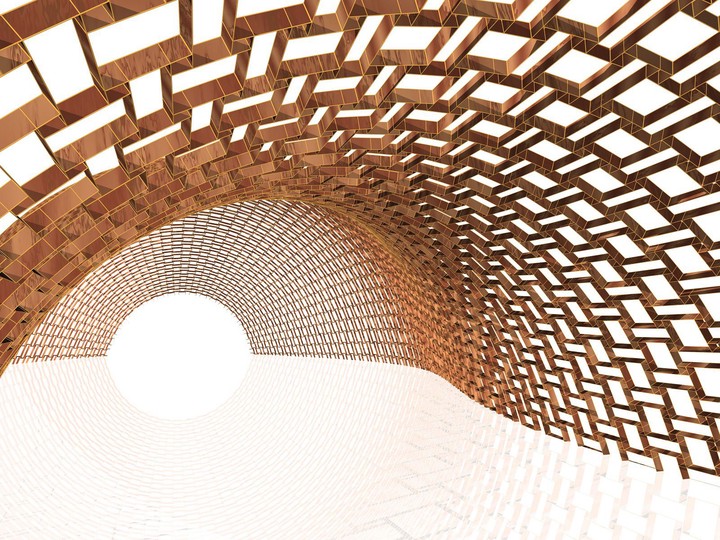Cell Packing Structures
 By Caigui Jiang
By Caigui Jiang
Abstract
This paper is an overview of architectural structures which are either composed of polyhedral cells or closely related to them. We introduce the concept of a support structure of such a polyhedral cell packing. It is formed by planar quads and obtained by connecting corresponding vertices in two combinatorially equivalent meshes whose corresponding edges are coplanar and thus determine planar quads. Since corresponding triangle meshes only yield trivial structures, we focus on support structures associated with quad meshes or hex-dominant meshes. For the quadrilateral case, we provide a short survey of recent research which reveals beautiful relations to discrete differential geometry. Those are essential for successfully initializing numerical optimization schemes for the computation of quad-based support structures. Hex-dominant structures may be designed via Voronoi tesselations, power diagrams, sphere packings and various extensions of these concepts. Apart from the obvious application as load bearing structures, we illustrate here a new application to shading and indirect lighting. On a higher level, our work emphasizes the interplay between geometry, optimization, statics, and manufacturing, with the overall aim of combining form, function and fabrication into novel integrated design tools.
Supplementary notes can be added here, including code and math.